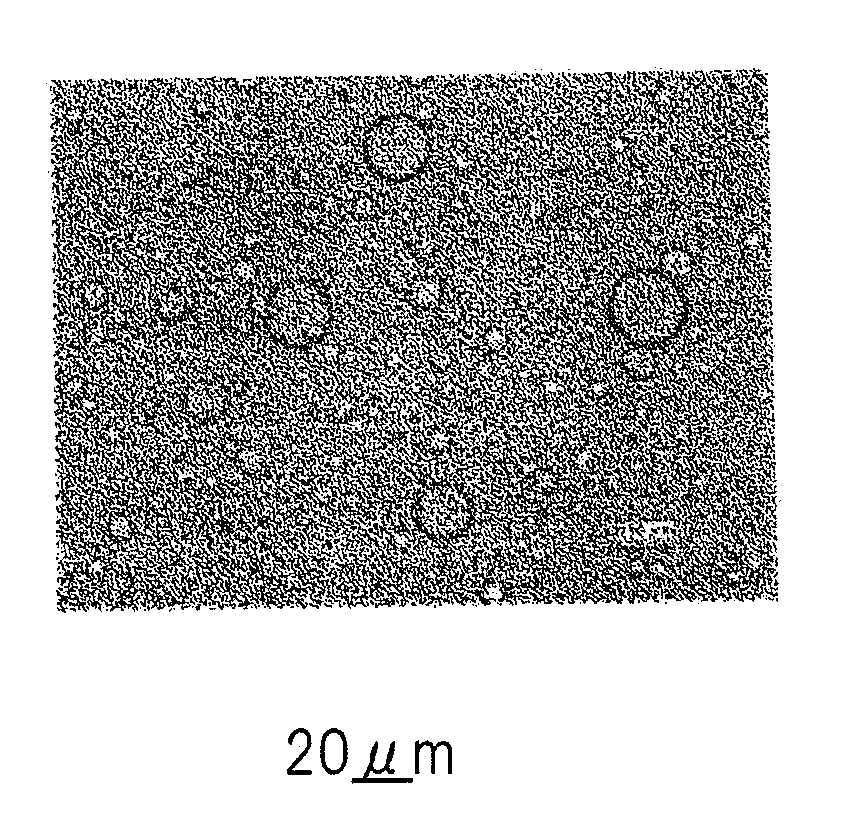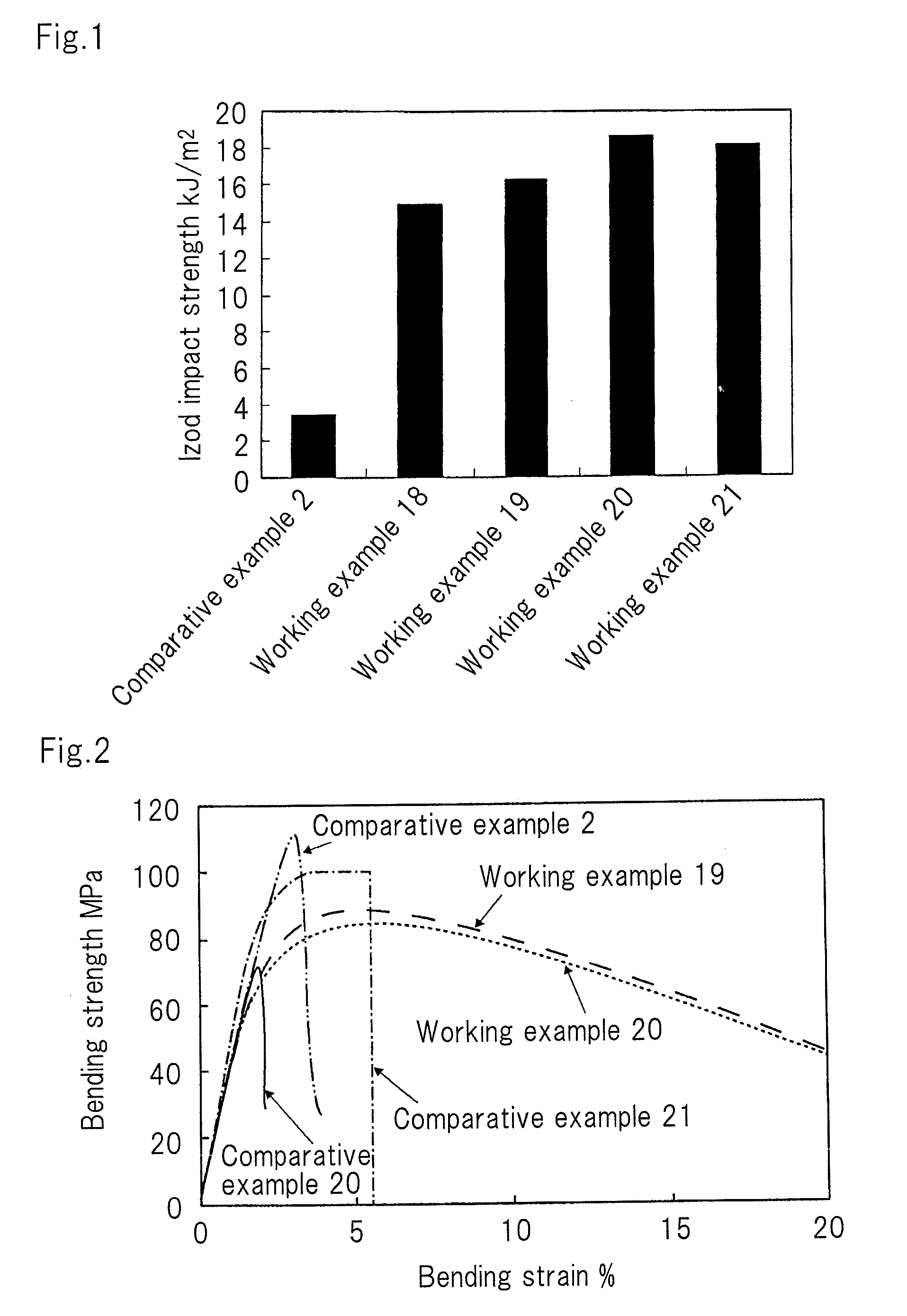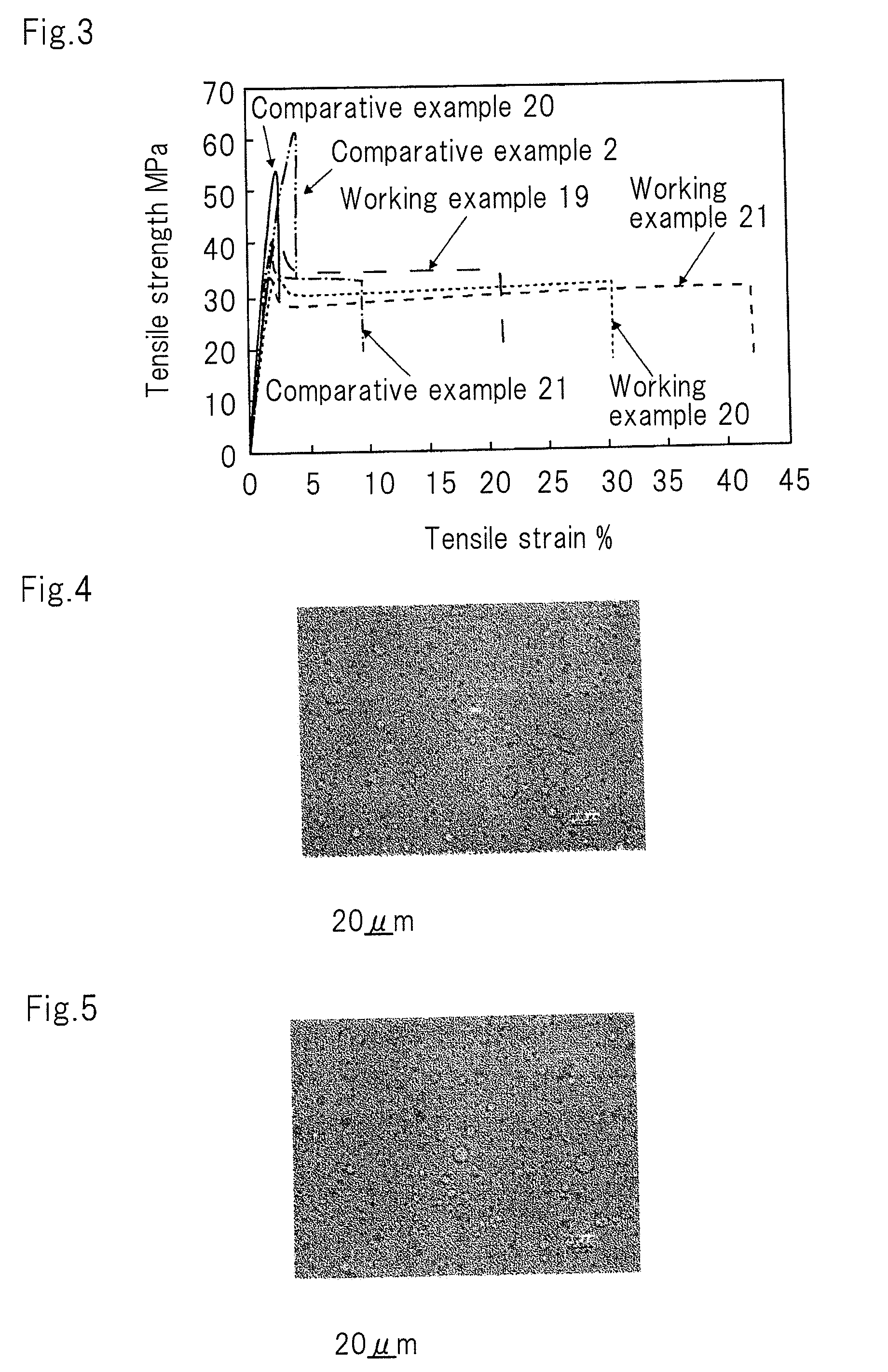Polysiloxane-modified polylactic acid composition, composition utilizing same, molded article, and production method
a polylactic acid and polysiloxane technology, applied in the field of polysiloxanemodified polylactic acid resin, can solve the problems of surface bleed, high impact resistance, and cannot be used as exterior finishing materials for electric or electronic devices requesting high impact resistance, and achieve good flexibility to rupture bending strain or tensile breaking strain, and high impact resistance.
- Summary
- Abstract
- Description
- Claims
- Application Information
AI Technical Summary
Benefits of technology
Problems solved by technology
Method used
Image
Examples
examples
[0073]Hereinafter, the present invention will be described in more detail with reference to Examples, but the present invention is not limited to these Examples.
[0074]Details for each of materials used is as follows:
1. Polylactic acid resin (PLA): Terramac TE-4000N (melting point 170° C.) manufactured by Unitika Limited.
2. Amino-containing polysiloxane compound (C)
Rgarding polysiloxane compounds used, the properties of each of side chain-diamino type polysiloxane compounds (C1), side chain-monoamino type polysiloxane compounds (C2), both ends-amino type polysiloxane compounds are shown in Tables 1˜3, respectively. Such polysiloxane compounds having amino groups may be prepared according to the matters described in Silicone Handbook (Daily Industrial Press, p 165). Amino-containing poly-siloxane compounds having amino groups at its side chain may be synthesized using siloxane oligomer obtained by the hydrolysis of aminoalkyl methyldimethoxysilane, circular siloxane and a basic cataly...
working examples [UNK]
Working Examples 18˜21, Comparative Examples 2, 20, 21
[0084]Mixtures in which PLA and if necessary, organic crystal nucleating agents (E) were blended according to the ratios shown in Tables 13˜15 were supplied from a hoper mouth of a continuous mixing extruder (Berstorff Model ZE 40A×40D, L / D=40, screw diameter φ40) with its cylinder temperature set to 190° C. Also, polysiloxane compounds having amino groups at its side chains and polysiloxanes having epoxy groups at its both ends (D) were separately supplied from vent apertures according to the ratios shown in Tables 13˜15. The sum of amounts supplied per 1 hour was adjusted to 15˜20 kg / h. After the mixtures were stirred and mixed in a melted state under shearing force by rotating a screw at 150 rpm, the mixtures were extruded into a strand shape from die apertures of the extruder. The extruded strands were cooled in water, and cut into pellets. Thus, pellets of polysiloxane-modified polylactic acid resin compositions were obtaine...
working example 22
[0094]Mixtures in which PLA and commercial polycarbonate resin (PC: Caliber 301˜22 manufactured by Sumitomo Dow) were blended according to the ratios shown in Table 16 were supplied from a hoper mouth of a continuous mixing extruder (Berstorff Model ZE 40A×40D, L / D=40, screw diameter φ40) with its cylinder temperature set to 260° C. Also, polysiloxane compounds having amino groups at its side chains were supplied from vent apertures according to the ratios shown in Table 16. The sum of amounts supplied per 1 hour was adjusted to 15˜20 kg / h. After the mixtures were stirred and mixed in a melted state under shearing force by rotating a screw at 150 rpm, the mixtures were extruded into a strand shape from die apertures of the extruder. The extruded strands were cooled in water, and cut into pellets. Thus, pellets of polysiloxane-modified polylactic acid resin compositions were obtained. After drying the resulting pellets at 110° C. for 5 hours, they were molded using an injection-moldi...
PUM
| Property | Measurement | Unit |
|---|---|---|
| Fraction | aaaaa | aaaaa |
| Fraction | aaaaa | aaaaa |
| Percent by mass | aaaaa | aaaaa |
Abstract
Description
Claims
Application Information
 Login to View More
Login to View More - R&D
- Intellectual Property
- Life Sciences
- Materials
- Tech Scout
- Unparalleled Data Quality
- Higher Quality Content
- 60% Fewer Hallucinations
Browse by: Latest US Patents, China's latest patents, Technical Efficacy Thesaurus, Application Domain, Technology Topic, Popular Technical Reports.
© 2025 PatSnap. All rights reserved.Legal|Privacy policy|Modern Slavery Act Transparency Statement|Sitemap|About US| Contact US: help@patsnap.com



